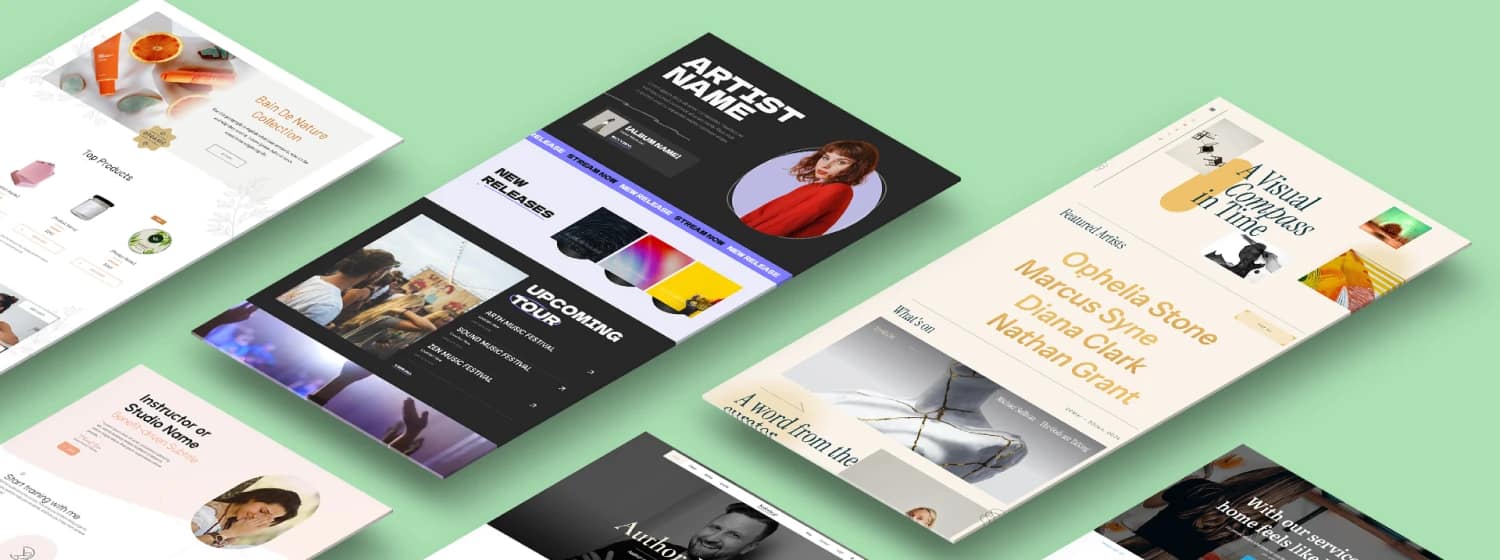TL;DR: Advanced Lead Generation in Plain English
If you’re short on time, let me give you the gist upfront:
- Stop relying on static forms. They’re the equivalent of waiting by the phone, hoping it rings.
- Lean into dynamic triggers. Scroll-based slide-ins, exit-intent offers, even conversational polls can nudge the right people at the right time.
- Capture intent earlier. Tools now let you see which companies visit your site, even if no one fills out a form. Combine that with third-party intent data and you’ll spot buying signals long before a demo request.
- Personalize like a pro. AI can score leads, tailor on-site content, and draft ridiculously specific outreach that sounds like you’ve done hours of research (because you kind of have, just faster).
- Respect your audience. Frequency caps, clear closes, and relevant offers make the difference between being a helpful guide and being a pest.
- Test relentlessly. Advanced doesn’t mean complicated — it means being curious and running small experiments every week.
I’ve tried the big-budget route. Spoiler: it’s overrated. The real wins come from being clever with timing and generous with value.
You’ve already got a form in your sidebar. Maybe you’ve tested a pop-up or two. That’s fine for starters — but let’s be honest, if your strategy stops there, you’re leaving most of your growth on the table.
When I say “advanced lead generation,” I don’t mean doubling down on the same old moves. I mean playing smarter: showing up with the right offer at the right time, using triggers that feel natural instead of pushy, and weaving in tools that give you a head start on understanding buyer intent. It’s not about cranking out more blog posts or throwing more money into ads. It’s about getting precise.
In this guide, I’m going to share the tactics I use (and trust) to capture leads in ways most marketers still overlook. You’ll see practical strategies you can apply this week, plus a mindset shift that will put you a step ahead of competitors who are stuck recycling the basics.
👉 If you haven’t yet, start with building the right kind of lead generation website. Then come back here and flip the switch on the advanced tactics.
FAQs: The 10 Questions Marketers Ask About Advanced Lead Generation
Whenever I talk about lead generation at events or with clients, the same questions always come up. Some are practical (“How long should a form be?”), others are strategic (“Do I really need outbound if inbound is working?”). These are the sticking points that trip people up — and the answers are often simpler (and more achievable) than they seem.
So let’s tackle the ten questions I hear most often, with the answers I’ve tested, refined, and still use in my own campaigns.
For me, “advanced” starts when you stop waiting for leads to come to you. Blog posts, SEO, and forms are table stakes. Advanced means using data to anticipate interest, guiding the buyer before they ever self-identify, and creating systems that adapt in real time. It’s proactive, not reactive.
Intent data is like an early warning system. It shows you which companies are suddenly researching keywords or topics related to your solution. When I see a spike, I don’t wait — I’ll run targeted ads, tailor outreach, or create content that answers the exact questions they’re asking. It’s about meeting them before your competitors even know they’re in play.
More than 95% of people who visit your site never fill in a form. That used to drive me nuts. Now, visitor ID tools tell me which companies are behind that “anonymous” traffic. Even if I don’t know the individual, knowing a key account just spent five minutes on my pricing page gives me a reason to act.
Forget the hype. The real magic is practical: predictive scoring that shows me which leads are most likely to convert, real-time content personalization that changes based on who’s browsing, and hyper-personalized emails written at scale. AI takes what used to be manual and reactive and makes it precise and scalable.
The dark funnel is where buying decisions really happen — in private Slack groups, DMs, industry forums, and podcasts. I can’t measure those conversations, but I can influence them. How? By showing up as a guest on podcasts, encouraging my team to share insights on LinkedIn, and being genuinely helpful in communities. Trust built in those hidden spaces pays off.
Absolutely. I think of the fundamentals as the runway — without them, nothing takes off. Advanced tactics are the radar tower guiding the planes in. You need both: strong SEO and content bring people in, and advanced tactics make sure you capture, qualify, and convert them with precision.
I keep it simple at the top of the funnel: name + email, done. In the middle, I’ll ask for a job title or company size to qualify. At the bottom — demos, pricing, consultations — I’ll add open-ended questions like “What’s your biggest challenge?” That one field gives me more sales insight than five dropdowns ever could.
Neither on its own. Inbound builds authority, trust, and a steady flow of interest. Outbound makes sure I don’t miss high-value accounts that aren’t actively searching yet. When you combine both, you cover the full buyer spectrum — those raising their hand and those who should be.
Partnerships are like borrowing someone else’s trust. I’ve co-hosted webinars, created joint research reports, even dabbled in affiliate programs — and every time, it’s faster than starting cold. You get instant access to a warm audience that already trusts your partner, which shortens the path to conversion.
Stop chasing volume. More leads doesn’t mean more sales — it usually means more wasted time. The future is about precision: fewer, better-qualified leads that convert faster because you reached them at the right moment, in the right way. That’s the mindset shift that changes everything.
Here’s Why “Old” Lead Generation Strategies Just Won’t Cut It in 2025
When marketers don’t have answers to the bigger lead generation questions, they fall back on what feels safe — static forms, generic CTAs, the occasional pop-up. On the surface, it looks fine: traffic is coming in, numbers are moving. But under the hood, the system is brittle.
Here’s what happens when teams stick to “old” lead gen:
- They chase traffic instead of fixing conversion leaks — thinking “10% more visitors” will magically mean more leads.
- They burn out on the content–ads–budget loop — pouring in energy without solving why visitors don’t convert.
- Sales gets lists full of poor-fit leads — names that never matched the ICP or people with zero buying intent.
- Time gets wasted on calls, demos, and follow-ups with prospects who were never real opportunities.
- Frustration builds between marketing and sales — each side pointing fingers while the cycle repeats.
The real problem isn’t effort. It’s direction. Without advanced tactics — intent signals, precise targeting, smarter forms of engagement — all that effort runs downhill into the same pool of poor-fit leads.
What Happens When You Don’t Evolve?
It’s like pouring water into a leaky bucket. You can keep pouring faster, but nothing changes until you fix the holes.
Those holes are everywhere: visitors bouncing at the exact moment they’re interested, ad budgets bleeding out on broad campaigns, and deals slipping to competitors who spotted intent signals before you even knew they existed.
That’s the cost of ignoring advanced tactics — wasted effort, wasted spend, and missed opportunities you may never get back.
What is the Psychology Behind “Advanced” Lead Generation?
One of the first things I remind readers (and honestly, myself) is this: people are wired to ignore the predictable.
We skim banners, we scroll past static CTAs, we tune out what feels like background noise. That’s why advanced tactics work — they interrupt the pattern at just the right moment, in just the right context.
Now, interruption doesn’t automatically equal annoyance. The same pop-up can be a lifesaver or a dealbreaker depending on how it’s used. Drop a discount box on someone the second they load a page, and it feels pushy. Show that same offer at the moment they’re about to close the tab, and it feels like a timely gesture. Timing, offer relevance, and device context matter far more than the tool itself.
Here’s what this looks like in practice:
- A checklist opt-in tucked mid-article, right after you’ve delivered a key insight — it feels like a natural next step.
- An exit-intent pop-up with a bonus template or discount — it rescues attention right before it slips away.
- A slide-in form triggered after someone scrolls 50% down the page — a subtle prompt that only appears once they’ve shown genuine interest.
For me, the key takeaway is simple: advanced lead generation isn’t about shouting louder, it’s about showing up smarter. When you respect the reader’s journey and meet them where they are, the “interruption” becomes an invitation.
8 Advanced Tactics That Work Right Now
I promised practical, so let’s get into the tactics you can start experimenting with today. Each one works because it respects timing, intent, and user experience — not because it shouts the loudest.
1. Timed Lightbox Pop-ups
I like these because they give a visitor a moment to breathe before showing up. Triggered after 20–30 seconds, they catch attention without overwhelming. If your content is strong, that’s just enough time for someone to get hooked before you ask for the opt-in.

2. Scroll-Triggered Forms
Scrolling equals engagement. When someone reaches 40–50% of a page, they’ve signaled interest. A form that slides in at that point feels relevant and natural — almost like a gentle tap on the shoulder.
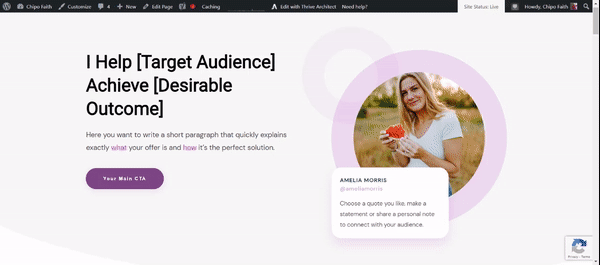
3. Exit-Intent Offers
This one’s a favorite. Someone’s about to leave, and instead of letting them disappear into the ether, you offer a bonus template, checklist, or discount. It’s not intrusive — it’s a last chance to turn goodbye into “I’ll stick around.”
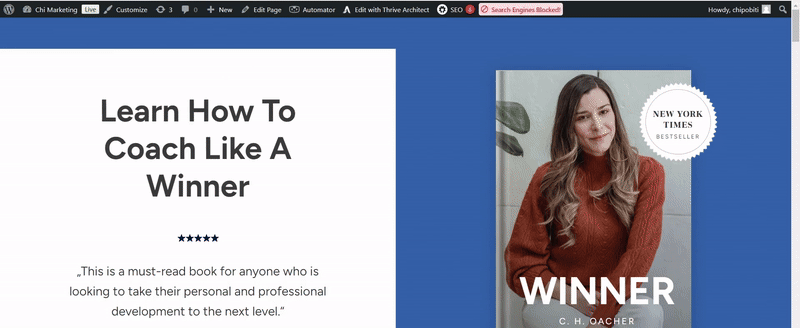
4. Sticky Ribbons & Notification Bars
Subtle, always-visible reminders that sit at the top or bottom of the screen. They work because they don’t block the main content but keep your offer in view for when the visitor is ready.
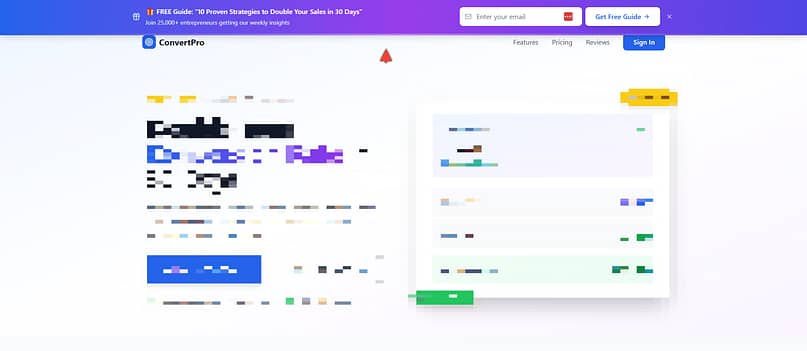
5. Welcome Mats
These are full-screen takeovers. I only use them sparingly — for big launches, time-sensitive deals, or high-value content. Used in the right context, they feel bold and exciting. Used everywhere else, they’re overkill.
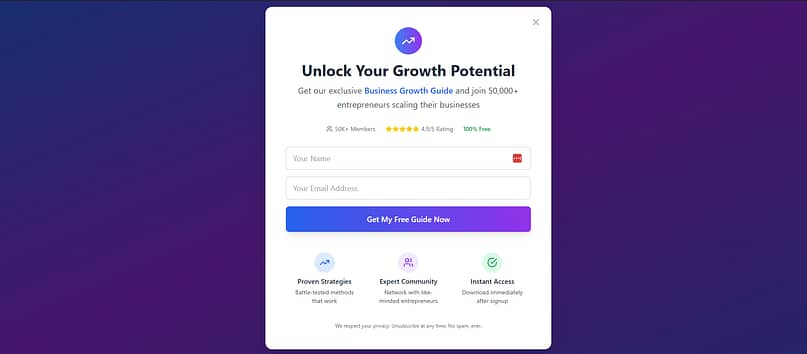
6. Slide-In Forms
Slide-ins are the quiet achievers. They drift into view from the corner just as someone’s getting deeper into the page. I like them for content upgrades — offering a resource that ties directly to the article they’re already invested in.
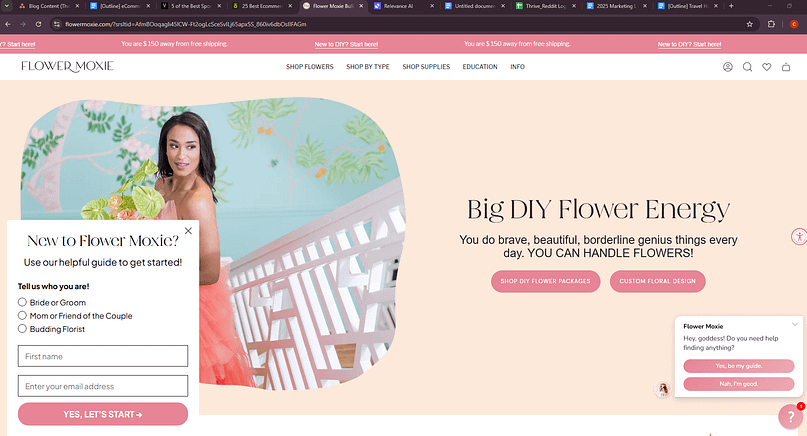
7. In-Content 2-Step Opt-ins
Instead of showing a form outright, you place a button or link inside the content. When clicked, it opens the opt-in. That small act of choice increases conversions — it’s the psychology of micro-commitments at work.
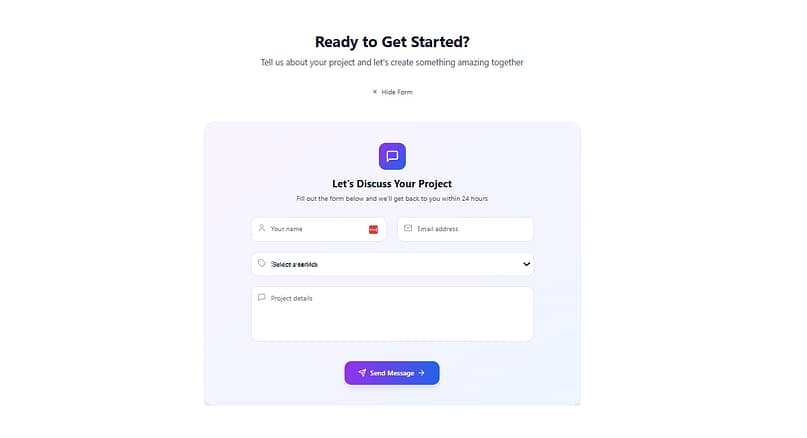
8. Conversational Chatbots & Polls
Not every form has to look like a form. Chatbots and polls turn the exchange into a dialogue, making people feel heard instead of harvested. Plus, the answers you collect double as valuable audience insights.
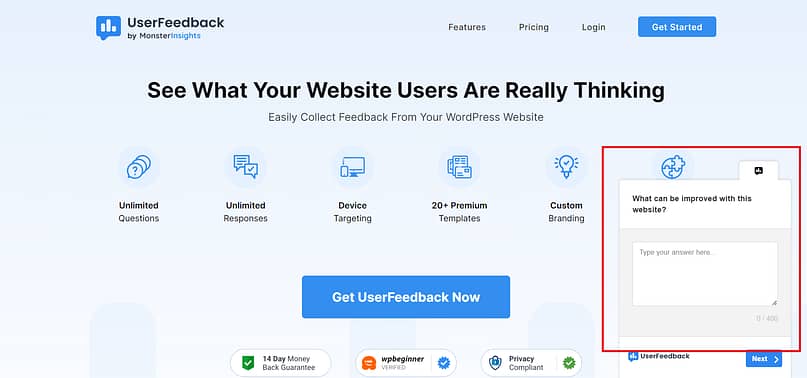
📌 Ready to master the pop-up playbook? Explore our guides on the Best Types of Popups to see which formats actually convert, and How to Create an Exit-Intent Popup in WordPress for a step-by-step walkthrough you can implement today.
9. Website Visitor Identification
I first came across visitor ID software when looking up the challenges static lead generation presents.
More than 95% of people leave a site without filling out a form — which means analytics alone will only ever show you part of the picture. Tools like Dealfront (formerly Leadfeeder) or Albacross flip that script by showing you the companies visiting your site, even if the individual stays anonymous.
It doesn’t give you names or emails (and that’s important for GDPR compliance), but it does give you context: if five people from Acme Corp are spending time on your pricing page, that’s useful intelligence.
Because you could capitalize on that and reach out to these companies and set up a meeting to get them over the line.
For solo founders, this is less about building a cold outreach machine and more about noticing patterns:
- Which industries are showing up most often?
- Are certain accounts returning multiple times?
- Do traffic spikes line up with campaigns or content pushes?
Further reading: Capturify’s overview of visitor identification does a solid job of explaining how it works and when it’s worth using.
10. Intent Data Activation
The idea of “intent data” used to sound like enterprise jargon to me. Platforms like Bombora or 6sense collect signals across thousands of sites to identify when companies are actively researching a topic. In theory, it means you can reach buyers before they ever land on your site.
That’s advanced, but also expensive. What I’ve learned is that you don’t need enterprise software to practice the mindset. Intent signals already exist in places you can access for free or cheap:
- Google Alerts for competitor brands or niche topics can tip you off when demand is heating up.
- LinkedIn Sales Navigator highlights trigger events like new funding or leadership hires — both are strong buying signals.
- Community chatter in Slack groups, Reddit threads, or industry forums often surfaces pain points in real time.
In other words, intent data at its core is about being proactive instead of reactive. You don’t have to buy the big platforms to get started.
Further reading: Cognism’s explainer on intent data is a good primer if you want to understand the landscape.
Other Lead Generation Tactics We Need to Talk About
I used to think I just needed more traffic. More clicks, more eyeballs, more “leads.” Spoiler: I was wrong. The real growth started when I stopped chasing volume and began treating every visitor like they actually mattered. That’s where the new frontier of lead generation comes in.
AI in Practice (Not Hype)
I’m not talking about enterprise-level setups — I’m talking about tools you can plug in this afternoon without hiring a data scientist.
- Smarter prioritization (predictive lead scoring): Platforms like HubSpot (Starter tier) or Freshsales have built-in AI scoring that flags which leads are most likely to convert. If you’re using a lightweight CRM like Pipedrive, you can add lead scoring rules manually — it’s not flashy AI, but it keeps you focused on the best opportunities.
- Personal websites without coding (real-time personalization): With Thrive Architect, you can create dynamic landing pages and swap in different headlines, offers, or CTAs based on visitor behavior — no coding required. For example, show one call-to-action for mobile visitors and another for desktop, or tailor an opt-in offer depending on which blog post they’re reading. If you want alternatives outside WordPress, tools like OptinMonster or ConvertBox offer similar targeting rules, but Thrive Architect gives you all of it natively inside WordPress.
- Better emails in less time (hyper-personalized outreach): Affordable AI assistants like Lavender or SmartWriter.ai can draft outreach emails tailored to a prospect’s LinkedIn profile or company news. If you’re already using ChatGPT, you can even build your own lightweight prompt workflow for personalization.
👉 Bottom line: AI isn’t about replacing your work — it’s about trimming hours off repetitive tasks and helping you focus on conversations that actually move the needle.
Influencing the Dark Funnel
Most buying decisions don’t happen in your funnel — they’re shaped in private conversations you’ll never see. Think Slack groups where peers swap tool recommendations, LinkedIn DMs where someone asks, “What do you use for this?” or a podcast episode where a trusted voice casually mentions a product they love. None of that shows up in your analytics, but it has a massive impact on whether someone ever comes knocking on your door.
You can’t track it, but you can influence it. And you don’t need a massive budget to do it. Here’s what that looks like in practice:
- Show up in communities: Join relevant LinkedIn or Slack groups in your niche. Tools like Common Room or Circle can help you find and manage community engagement, but honestly — sometimes it’s as simple as joining one industry group and showing up regularly with value.
- Use your personal voice: Scheduling tools like Buffer or Hootsuite make it easier to post consistently on LinkedIn or Twitter without it eating your day. And if you’re camera-friendly, StreamYard or Riverside.fm are affordable ways to create quick thought-leadership videos that feel personal and approachable.
- Get in their ears (podcasts): Start with low-lift tools like PodMatch (to connect with podcast hosts looking for guests) or MatchMaker.fm. You don’t need to launch your own show — being a guest on the right podcast gets you in front of an audience that already trusts the host.
The “dark funnel” may never give you clean attribution reports, but influence here pays off later. When someone finally lands on your site, they’ve already heard your name, seen your content, or caught your voice on a podcast. That head start is often the difference between being another option and being the obvious choice.
Why this matters
This isn’t some futuristic promise. These tools are here. These strategies are proven. If you’re still clinging to old-school “traffic = growth” thinking, you’re playing the wrong game. The future isn’t about chasing clicks. It’s about surfacing the invisible, predicting demand before it knocks, and showing up where decisions actually happen.
Golden Rules for Using Advanced Tactics Without Annoying Visitors
I’ve lost count of how many times I’ve unsubscribed, closed a tab, or sworn off a brand because their “lead gen strategy” felt more like harassment than help. That’s the line we can’t cross. Advanced tactics work best when they respect the human on the other side of the screen. Here’s how I keep myself honest:
Always deliver value first
Your pop-up, banner, or chatbot should feel like a small win, not a grab for an email address. A checklist that saves me time? Yes, please. A generic “sign up for updates”? Hard pass. The moment it feels one-sided, you’ve lost me.
Context matters
The right trigger on the right device with the right offer — that’s the sweet spot. A desktop-only exit-intent with a free template? Helpful. The same thing smacking me in the face on mobile while I’m just trying to scroll? Infuriating.

Frequency caps & suppression
Nothing tanks trust faster than overexposure. Once someone opts in, stop showing the same form. Use frequency caps to avoid becoming the digital equivalent of that salesperson who won’t leave you alone in the store.
Test everything
I used to think I knew which headline or trigger would convert. Then A/B testing humbled me — repeatedly. Now I let the data settle the arguments. Headlines, offers, timing, even button colors… test them all.
Respect trust
Compliance isn’t optional. GDPR, visible close buttons, clear privacy policies — these aren’t just legal checkboxes. They’re signals that you respect your visitors. And respect is the currency of long-term conversion.
📌 Want to go deeper? Check out these 8 Best Practices for Pop-ups.
The Toolkit That Makes It Easy
If you’ve ever spent a late night Googling “best WordPress pop-up plugin” while your coffee went cold and your patience thinner… I see you. I’ve been there too. I once had five different plugins cobbled together just to get the basics working. One broke every time WordPress updated. Another conflicted with my theme. The third was so ugly I’d rather not talk about it.
That’s when I realized: advanced lead generation shouldn’t feel like a hackathon. It should feel seamless.
That’s why I run everything through Thrive Leads. It’s not just a pop-up builder — it’s my entire conversion engine in one place.
Here’s what makes the difference:
- Advanced triggers: I can set a form to show up when someone scrolls halfway through an article, spends 30 seconds on a page, or even looks like they’re about to leave. No guesswork, just relevance.
- Page-level targeting: The offer on my SEO article is different from the offer on my email marketing guide. Thrive Leads makes that tailoring dead simple.
- Mobile-specific display: Because what works on a laptop often drives people crazy on a phone. I can design separate, mobile-friendly experiences without duplicate effort.
- Built-in A/B testing: I don’t have to argue with myself about headlines anymore. I just test them, watch the data, and let the winner run.
And because it’s part of Thrive Suite, I’m not stuck with “just forms.” I get the full toolbox: page building, theme design, course delivery, evergreen marketing campaigns — everything working together, out of the box.
That’s the real magic. I don’t spend hours troubleshooting conflicts or duct-taping plugins anymore. I spend that time actually building my list and growing my business.
👉 Build any of these tactics in minutes — no Frankensteined plugins, no custom code. Just one toolkit that’s designed for marketers like us: people who care about conversions, not complexity.
Strategic Recommendations for Building Your Precision Engine
I like to think of advanced lead generation as less “magic hacks” and more like building a precision engine. Every piece has to click into place — otherwise you’re just burning fuel and making noise. Here’s how I approach it:
Audit your funnel
The first question I ask myself: where am I leaking leads? If I’m still relying on a single sidebar form, that’s not a strategy, that’s a bandaid. Audit every stage. Look at where visitors drop, where conversions stall, and where outdated tactics are quietly costing you growth.
Prioritize smartly
It’s tempting to chase shiny tools before the basics are stable. Instead, I layer my tech stack in tiers:
- Tier 1: CRM + automation — The foundation. If my contact data and workflows aren’t organized, nothing else matters.
- Tier 2: Visitor ID + analytics — Once the basics are running smoothly, I add visibility into the 95% of traffic that never fills a form.
- Tier 3: Intent data + AI personalization — The top layer. This is where things get proactive: predicting demand, tailoring content in real time, and ranking leads with precision.
Foster a testing culture
The biggest growth I’ve ever seen didn’t come from one giant campaign. It came from tiny, consistent experiments. One new headline here, one trigger tweak there, one audience test a week. They compound. Build a culture where data, not opinions, drives the next move.
📌 For the full picture, start with How to Create a Lead Generation Website.
FAQs: The 6 Burning Questions Marketers Ask
I get these questions all the time — from clients, peers, even other marketers sliding into my DMs. Let’s clear them up once and for all.
If your content builds awareness (think blog posts, infographics, or a starter checklist), keep it ungated. Let it spread. When it’s deeper, high-value stuff (like a research report, templates, or a webinar replay), that’s when I gate. My rule of thumb: if I’d happily pay with my email to get it, it’s fair to ask.
Practical tools always win. Templates, swipe files, checklists — things that save time or reduce effort. “Join our newsletter” just doesn’t cut it. If it feels like a gift, it converts. If it feels like homework, it won’t.
Early stage (TOFU): short and sweet. Name + email, done.
Middle stage (MOFU): add in company or job title, because now you’re qualifying.
Bottom stage (BOFU): they’re ready for a demo or quote — ask the deeper questions like “What’s your biggest challenge?” That one field can give you more insight than five extra dropdowns.
It’s not a competition. Inbound builds authority and brings people to you. Outbound makes sure you don’t miss the dream accounts that aren’t actively searching yet. I use both. Inbound feeds the long game, outbound keeps the pipeline full in real time.
Lead volume means nothing if the quality isn’t there. I look at:
- MQL-to-SQL conversion rate (are we handing sales the right people?).
- Cost per acquisition, not just cost per lead.
- And the big one: how much revenue a campaign actually influenced. Vanity metrics are nice, but my CFO doesn’t care how many clicks I got.
Less than you think. Frequency caps are your friend. If someone said no twice, hammering them a third time won’t change their mind — it’ll just annoy them. I usually cap it at once per session, with suppression once they convert. Respect gets you further than repetition.
Conclusion: Your Next Step in Lead Generation
When I say “advanced” lead generation, I’m talking about moving from guesswork to precision. It’s about spotting opportunities before they slip away, showing up in the right moment with the right offer, and building a system that compounds over time.
You don’t need to flip your funnel upside down tomorrow. Start small. Pick two tactics from this guide, try them out this week, and pay attention to what you learn. Those quick experiments stack up faster than you think.
And when you’re ready to roll everything into one powerful system? Thrive Suite gives you the whole toolkit — advanced triggers, smart suppression, mobile targeting, A/B testing — all working together without the usual plugin chaos.
👉 If you want more of your visitors turning into subscribers and customers, now’s the moment to make these tactics yours.

